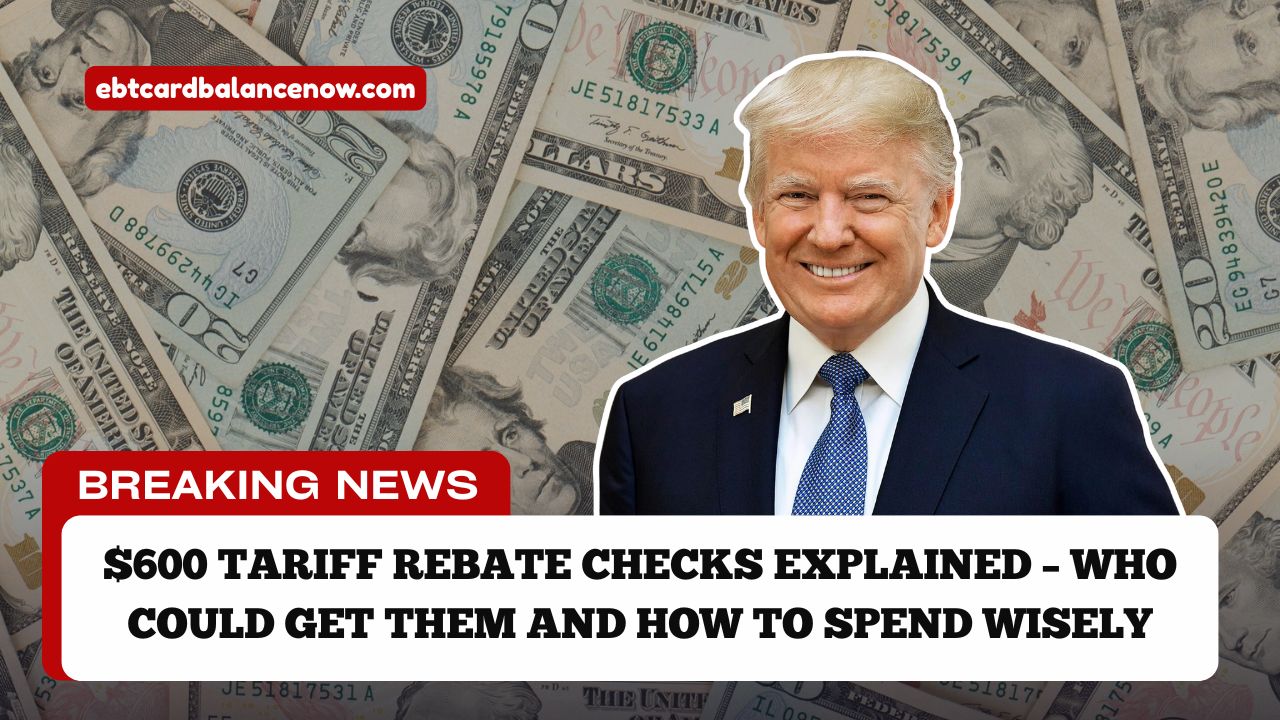Lawmakers are currently debating a proposal that could send $600 rebate checks to American households. Rising costs tied to tariffs have put additional pressure on consumers, and the proposed American Worker Rebate Act seeks to redirect tariff revenue directly back to working families.
If approved, the plan would provide relief similar to past stimulus payments, offering extra cash to millions of Americans. But beyond the excitement of a possible payout, a more important question remains: how should you use this money wisely?
What the American Worker Rebate Act Includes
Introduced in July 2025, the American Worker Rebate Act proposes using federal tariff revenues to fund direct rebate payments. The legislation guarantees $600 per adult and dependent child, with families of four eligible to receive as much as $2,400.
To ensure benefits are targeted to middle- and working-class families, the payments would begin to phase out once income surpasses:
- $75,000 for individuals
- $112,500 for heads of household
- $150,000 for joint filers
Above these limits, the rebate gradually reduces, meaning higher-income households may receive a smaller check or none at all.
The proposal also allows for the possibility that payments could exceed $600 if tariff revenues outperform estimates. However, the bill must pass both chambers of Congress and gain presidential approval before becoming law.
Breakdown of Key Details
| Aspect | Details |
|---|---|
| Proposal Name | American Worker Rebate Act |
| Introduced | July 2025 |
| Rebate Amount | $600 per adult and dependent child |
| Family Example | Family of four could receive $2,400 |
| Income Phase-Out | $75K (single), $112.5K (head of household), $150K (joint filers) |
| Distribution Method | Refundable tax credit for 2025 tax year |
| Expected Timeline | Payments could arrive late 2025 or early 2026 if passed |
| Funding Source | U.S. tariff revenues, currently generating over $100 billion annually |
| Potential Increases | Rebates could exceed $600 if tariff revenue is higher than projected |
Why These Rebates Matter
Supporters argue that tariffs have effectively raised consumer costs, and redirecting those funds back to households helps offset the financial strain. For working families, an additional $600 to $2,400 could provide meaningful short-term relief.
Critics, however, warn that rebates could have limited long-term impact and may contribute to federal deficit concerns. Still, the plan highlights how policymakers are looking for ways to cushion the effects of inflation and higher living expenses.
How to Use the Rebate Wisely
Even though the bill’s passage is still uncertain, thinking about how to use unexpected money is always a smart financial exercise. Here are some of the most effective strategies:
1. Pay Off High-Interest Debt
Credit card balances often carry interest rates above 20%, meaning debt can spiral quickly. Applying a $600 rebate toward credit card debt can dramatically cut repayment time and save hundreds in interest costs.
2. Build an Emergency Fund
If debt is under control, using the rebate to boost your emergency savings is a wise choice. Experts recommend covering 3 to 6 months of living expenses to prepare for unexpected events such as medical bills, job loss, or car repairs.
3. Save in High-Yield Accounts
Placing the money in a high-yield savings account earning around 4% APY ensures that your funds remain accessible while still growing over time.
4. Invest for the Future
For those with stable finances, investing in low-cost index funds or retirement accounts could turn $600 into a larger sum over the years through compounding growth.
5. Cover Essential Expenses
Some families may simply need to use the rebate to handle rising costs of groceries, rent, childcare, or utilities. Directing the funds toward essentials can provide immediate relief and reduce financial stress.
The Bigger Picture
The American Worker Rebate Act is still in debate, and its future in Congress is uncertain. Some lawmakers are enthusiastic about returning tariff dollars to American families, while others are skeptical about its fiscal impact.
Regardless of the bill’s outcome, the conversation itself highlights an important financial lesson: whether it’s a government rebate, a tax refund, or a workplace bonus, unexpected cash can create long-term stability if used wisely.
The proposal to issue $600 tariff rebate checks could put meaningful money into the hands of millions of Americans. While the legislation still faces political hurdles, the potential relief has sparked interest across the country.
If approved, households would need to decide whether to spend, save, or invest this one-time payment. The smartest approach often lies in reducing debt, building savings, or planning for long-term growth.
Even if the proposal doesn’t pass, preparing to handle unexpected funds wisely can improve financial resilience and security for the future.
FAQs
Who would qualify for the $600 rebate?
Any U.S. adult or dependent child would qualify, but the payment begins phasing out for individuals earning over $75,000 and couples earning over $150,000.
When would the rebate checks be issued?
If the bill becomes law, payments would be distributed as refundable tax credits for the 2025 tax year, likely arriving late 2025 or early 2026.
Could families receive more than $600 per person?
Yes. The $600 is a guaranteed minimum, but the amount could rise if tariff revenues are higher than projected.

